- July 28, 2023
- by Cindy Williams
- 0 Like
- 0 / 5
- Cuisine: Comfort Food
- Difficulty: Easy
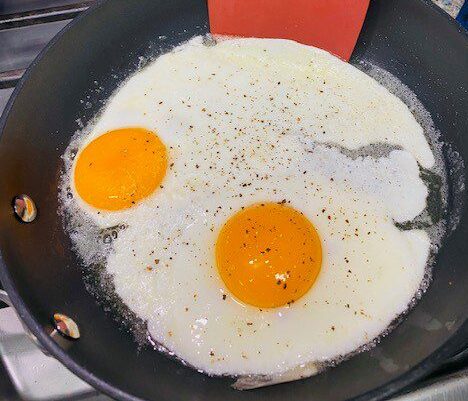

-
Prep Time5 minutes
-
Cook Time5 minutes
-
Serving1
-
View756
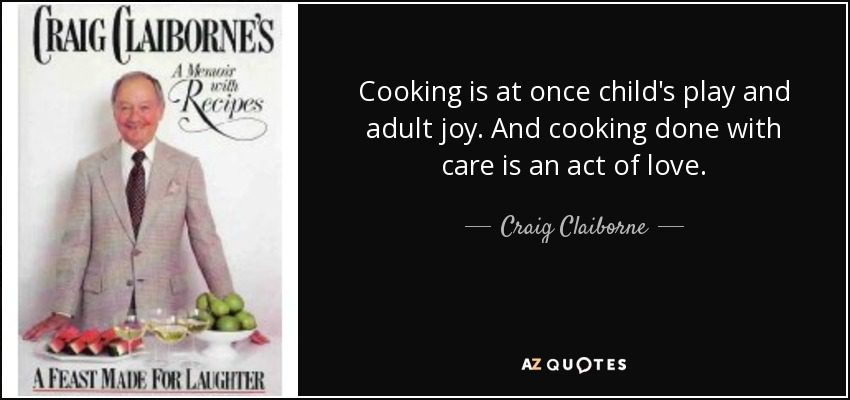
These are Craig Claiborne’s instructions for Fried Eggs: Almost any kind of fat may be used for frying eggs but the commonest are butter, salad oil – such as peanut or vegetable oil – or bacon fat. Butter and bacon fat produce a flavor that many people prefer, but salad oil will give the whitest, best-looking egg. Whatever fat is used, the procedure is the same. 1. For each 6 eggs, heat 3 tablespoons of fat. When the fat is hot but not burning, carefully break the eggs into the skillet. Gently spoon the fat over the eggs as they cook. 2. Cook the eggs over gentle heat until the whites are set and the yolks are still liquid. If the eggs are to be cooked on both sides, turn them carefully with a pancake turner and serve immediately.
I decided on a weeknight that I just didn’t have the energy to cook much. So, I fried two eggs and slid them onto some buttered toast, and had some honey smoked salmon on the side. This was one of the best dinners I have had in a while, and I would say that whether it took five minutes or 2 hours to prepare.
I recently picked up Craig Claiborne’s Kitchen Primer (1969) at the Goodwill Store while rambling around with my mom, looking for bargains. You can buy it at Amazon.com: https://amzn.to/3rVl8hm I owned this book years ago, and when I re-opened it, I remembered the illustrations as well as the directness of the recipes. Re-reading it was revelatory. Claborne’s primer is required reading for both the inexperienced cook and the “not a spring chicken” cook who admits she is still learning something new every day. I’m guessing that Claiborne’s assumption about his reader was that she was a newlywed still honeymooning in a swirl of domestic optimism. Or, he might have been addressing an ambitious young working woman who delusionally thought she was going to have it all. Whoever he was talking to, Claiborne was telling her (and I say ‘her,’ because I think in 1969 it was a safe assumption that more women than men were reading his book) that cooking was something anyone could do, that it was intuitive, that it was a natural expression of the desire to create something beautiful and nourishing for our loved ones. And, I would add, for ourselves. I love this book. Claiborne’s essay on eggs alone is great. A honeymooner could bet her marriage on this how-to-make-great food manual. This is not a recipe book. This is not a sofa table how-to-impress-your-friends-from-Brussels cookbook. This is a letter from Claiborne to anyone who wants to learn to prepare good, no, great, food. You get the impression that he actually really cares that you get it right while assuring you that there is a wide margin for error as long as you’re trying. Okay, maybe I’m readying a lot between the lines, but I just remember having this little book in my kitchen in Birmingham, Alabama when I started learning how to cook and I remember spending waaaay too much money on a big copper bowl in a fancy kitchen shop in Mountain Brook because I saw Craig Claiborne whipping egg whites in one, and I thought I had to have it. Read Craig Claiborne if you don’t know or recall how influential he was in the history of food writers.https://amzn.to/3ObJYkO You can get his books at Amazon.com:https://amzn.to/3Dzk45G He was too cool to be cool. No gimmicks, no flash, no yelling. He just wanted to share his love of good food and cooking.
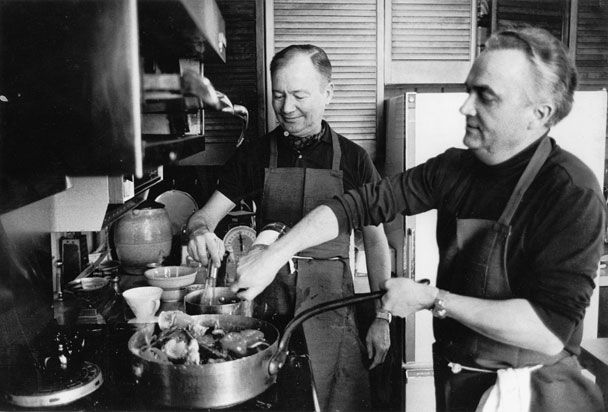

Craig Claiborne was essentially a Southern cook. This is an excerpt from Wikipedia:
Along with chef, author and television personality Julia Child, Claiborne has been credited with making the often intimidating world of French and other ethnic cuisine accessible to an American audience and American tastes. Claiborne authored or edited over twenty cookbooks on a wide range of foods and culinary styles, including some of the first best-selling cookbooks dedicated to healthy, low-sodium and low-cholesterol diets. He had a long-time professional relationship and collaborated on many books and projects with the French-born New York City chef, author and television personality Pierre Franey. Claiborne was an advocate of a fad diet known as the Gourmet Diet. With Franey, he worked out two hundred low-sodium, low-cholesterol recipes for this diet.
The $4,000 meal
In 1975, he placed a $300 winning bid at a charity auction for a no-price-limit dinner for two at any restaurant of the winner’s choice, sponsored by American Express. Selecting Franey as his dining companion, the two settled on Chez Denis, a noted restaurant located in Paris, France, where they racked up a $4,000 tab on a five-hour, thirty-one-course meal of foie gras, truffles, lobster, caviar and rare wines. When Claiborne later wrote about the experience in his New York Times column, the newspaper received a deluge of reader mail expressing outrage at such an extravagance at a time when so many in the world went without. Even the Vatican and Pope Paul VI criticized it, calling it “scandalous.” It was also noted that he and Franey ordered nearly every dish on the menu, but they took only a few bites of each one. Despite its scale and expense, Claiborne gave the meal a mixed review, noting that several dishes fell short in terms of conception, presentation or quality.
Ingredients
FRIED EGGS
Directions
This is just the simplest and most delicious dish. A perfectly cooked egg is Nirvana. A couple of perfectly cooked eggs over buttered toast with some honey smoked salmon on the side... that's what rich people eat.
Heat about 2 TBS. butter in a small six inch non-stick skillet over medium heat. The butter needs to melt and just begin to bubble.
Crack two eggs into the skillet. If you're not comfortable doing this right over the skillet, crack each egg in a small cup first and then slide the egg into the skillet.
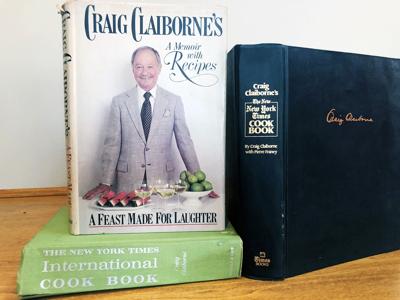


Let the egg cook until the whites are set and the yolk is still soft. You want the yolk to be runny when you cut into it!
Slide the eggs out of the skillet onto your buttered toast. Crack some salt and pepper over the eggs. Serve immediately. Stop taking pictures! Eat slowly and enjoy.
You May Also Like


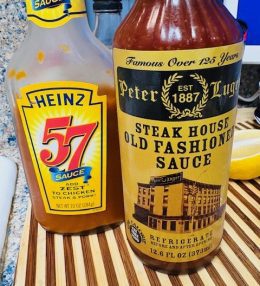

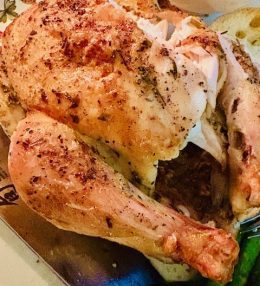

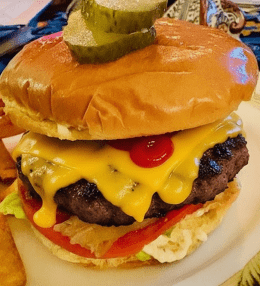

Craig Claiborne’s Fried Eggs
Ingredients
FRIED EGGS
Follow The Directions
This is just the simplest and most delicious dish. A perfectly cooked egg is Nirvana. A couple of perfectly cooked eggs over buttered toast with some honey smoked salmon on the side... that's what rich people eat.




Heat about 2 TBS. butter in a small six inch non-stick skillet over medium heat. The butter needs to melt and just begin to bubble.




Crack two eggs into the skillet. If you're not comfortable doing this right over the skillet, crack each egg in a small cup first and then slide the egg into the skillet.



Let the egg cook until the whites are set and the yolk is still soft. You want the yolk to be runny when you cut into it!




Slide the eggs out of the skillet onto your buttered toast. Crack some salt and pepper over the eggs. Serve immediately. Stop taking pictures! Eat slowly and enjoy.




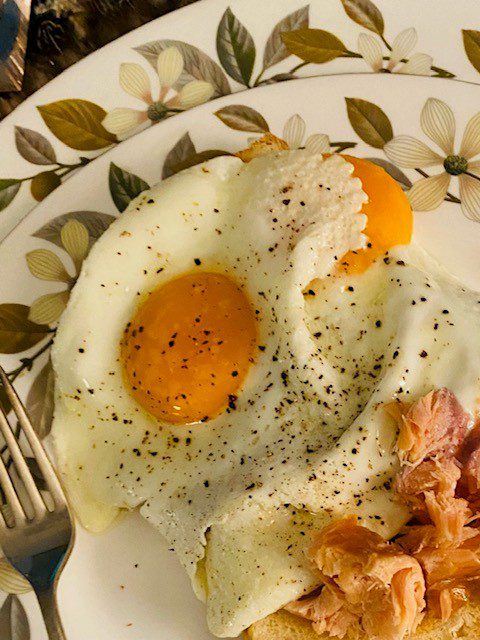
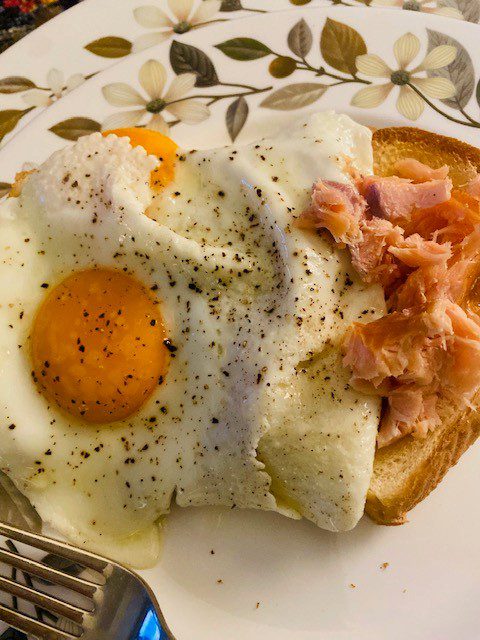
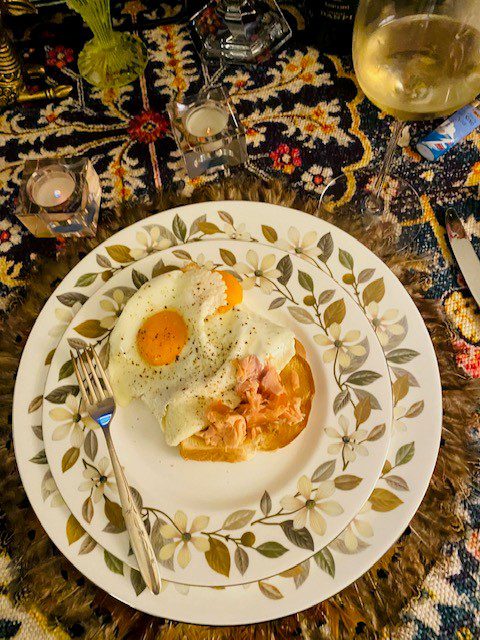
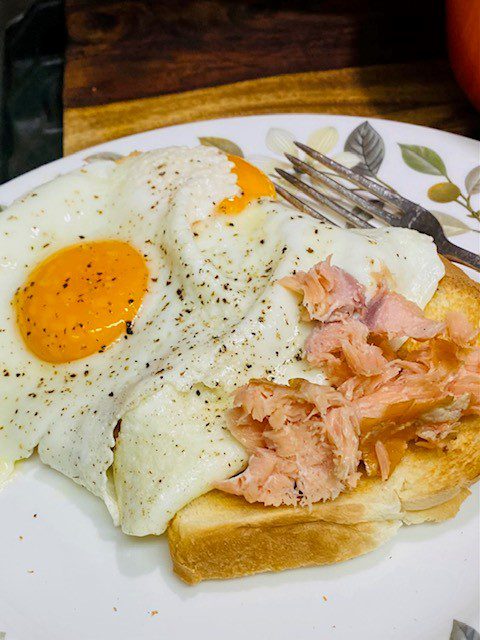
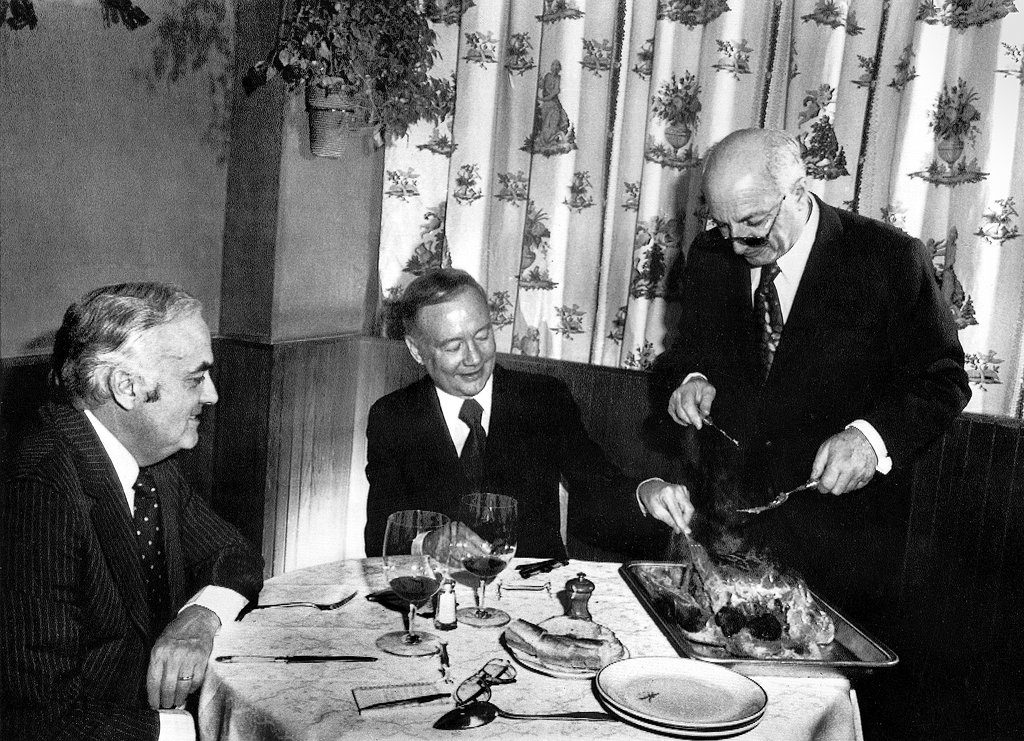
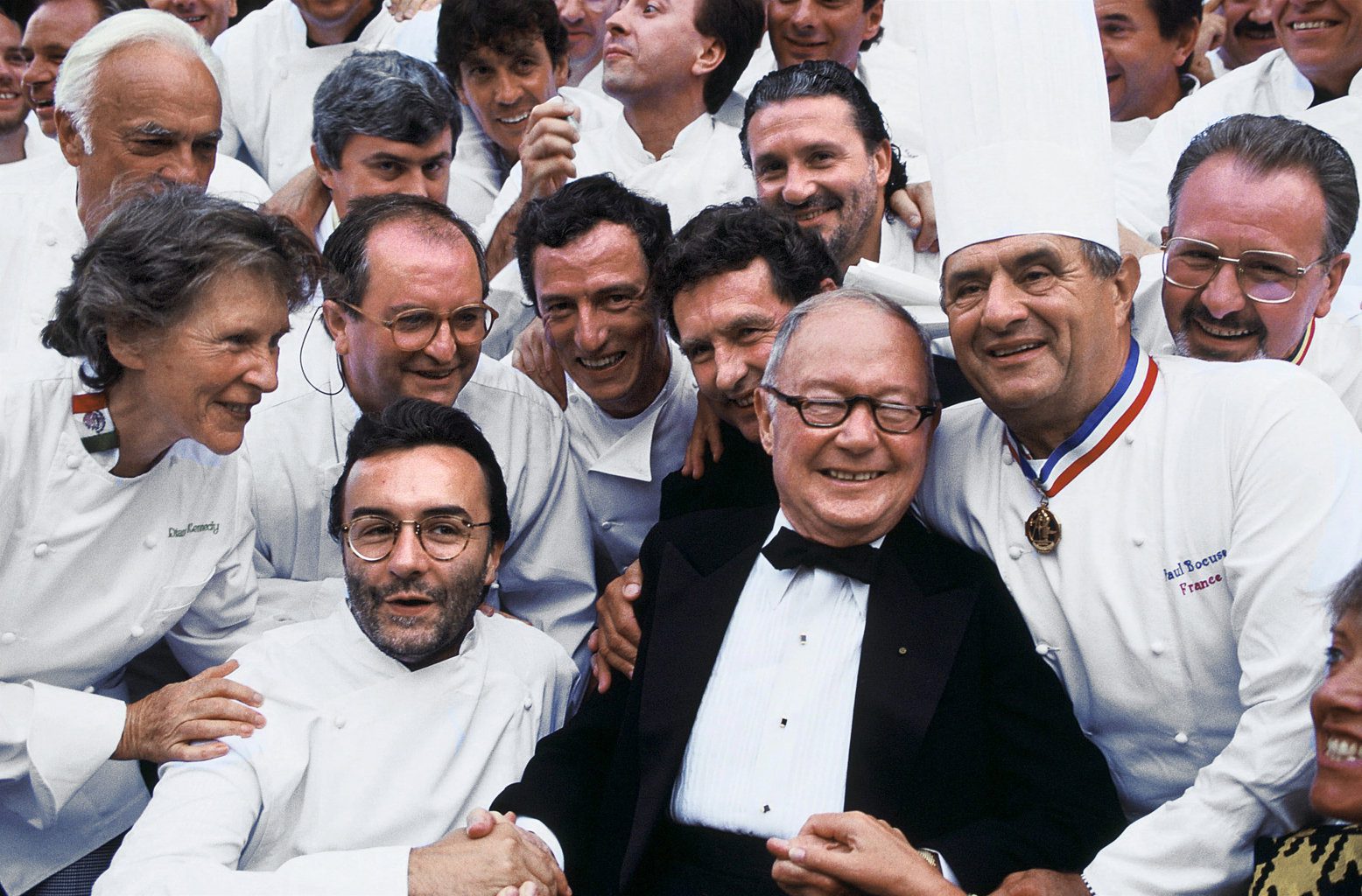
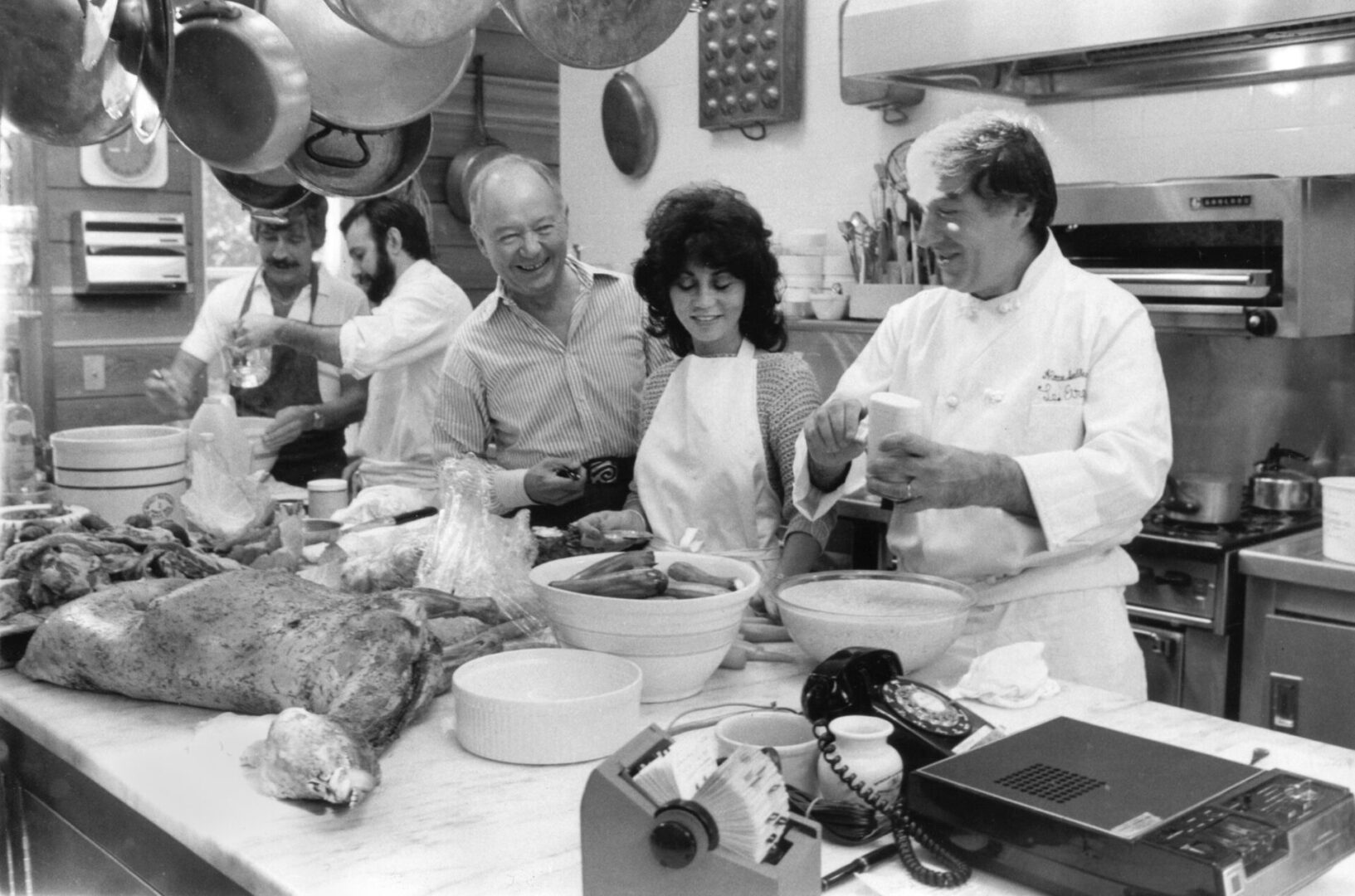

Leave a Review